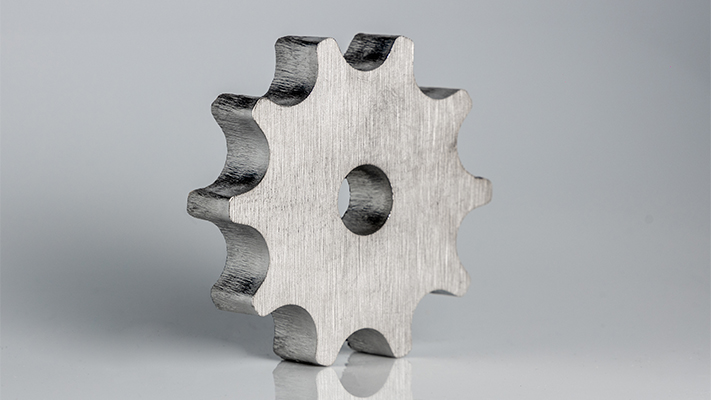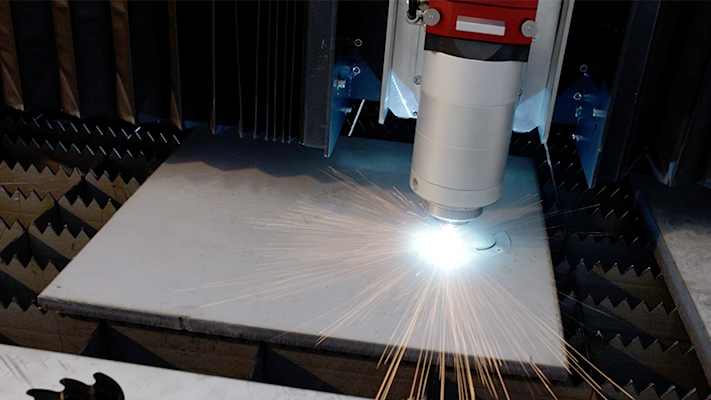Laser cutting or plasma cutting? In recent years the fiber laser cutting market in the sheet metal sector is expanding considerably, in many cases also replacing the use of plasma cutting. But which of the two options is really the most advantageous for a company and what are the parameters for establishing it? Here is a comparison between laser cutting and plasma cutting, taking into account all factors and the current evolution of the technology.
Laser cutting vs plasma cutting: which parameters to consider
When buying a new machine, it is important to take into account all the key factors that affect the productivity, quality and economy of the company. In the case of the comparison between two different metal cutting systems, we will therefore have to consider the advantages and disadvantages of each technology based on various aspects. In particular:
- Production speed
- Machining precision
- Cutting power
- Cost and consumption of machinery
- Production flexibility
- Process sustainability
Let’s see what are the pros and cons of laser cutting and plasma cutting for each of these parameters, and how the two sheet metal cutting systems have evolved over time.
Plasma metal cutting: how it was developed and how it works
Plasma cutting is a technology developed in the United States in the 1950s as an alternative to flame cutting. The operation is based on an inert gas expelled at high speed by the nozzle and inside which an electric arc is established. The electrically ionised gas from the arc becomes plasma and melts the material in the identified cutting zone. The result is a sharp cutting line.
Laser cutting of metal: how it is born and how it works
Laser cutting is a cutting system developed in the United States in 1960 to drill holes of maximum precision on diamonds. In 1963, the CO2 laser was created in Great Britain, much more efficient and economical, which extends its use to metal cutting. In more recent years, the fiber optic laser has allowed even more precise machining with power performance and higher speeds than the CO2 laser on thicknesses up to 50 mm. In fiber lasers, the creation of the laser beam takes place through the transmission of energy from diodes inside high-quality fiber optic cables. In this way, you get a very high precision cut, ideal even for complex machining.

Fiber laser cutting vs plasma cutting: which one is best for the company?
For years, fiber laser cutting and plasma cutting have presided over different market segments in the sheet metal sector, based on the company’s applications. Initially, the fiber laser was only suitable for reduced thicknesses, so metal cutting with high thicknesses remained the prerogative of plasma cutting. In recent years, the evolution of fiber laser technology has allowed it to be increasingly versatile, expanding its use in the sector of thick sheet metal. Here are the advantages and disadvantages of the two different cutting technologies:
Advantages and disadvantages of plasma cutting
Plasma cutting is an affordable cutting technology when purchasing the machine. It can cut all types of metal with a thickness of up to 80 millimetres, provided that the material is conductive to allow the creation of the electric arc that powers the operation of the plasma. However, plasma cutting has some limitations, such as the quality of the cut that may not be constant on thick or complex materials. In addition:
- Slower machining in the cutting process
- Not suitable for high precision machining because it leaves a chamfer of 4-6 degrees
- High energy consumption that reduces the convenience of cutting
- Pollution: waste of material due to kerf (the width of the material removed during the cutting process), greater CO2 emissions produced compared to fiber
- It is not possible to make holes or slots
- The workpiece must be further machined with other machines
- It leaves a rougher edge and greater thermal deformation than fiber laser
- Higher energy consumption and higher CO2 emissions
Advantages and disadvantages of fibre laser cutting
Fiber laser cutting systems have higher costs than plasma systems and were initially used only for thicknesses of 5-20 mm. The evolution of technology with fiber laser cutting systems up to 30 kW has allowed an application on thicknesses up to 50 mm with exceptional performance. In particular:
Cutting speed on 20-50 mm up to 3 times higher than plasma
Very high precision in machining with sharp and clean edges
Machining also on conductive metals
Reduced electricity consumption, amortising the investment
Environmental sustainability, thanks to lower energy consumption, material savings and reduced CO2 emissions
More precision and less thermal deformation compared to plasma
Leaves a cleaner and more precise edge than plasma does
Consumes less energy and produces less CO2 emissions than plasma does

The importance of the cutting head in high power machining
The very high power achieved by fiber laser cutting systems and the numerous advantages of technology explain its increasingly widespread use also as a substitute for plasma. However, it is important to point out that not all laser systems up to 30 kW are actually able to exploit its power even on high thicknesses. Such processing power requires a cutting head capable of supporting it, so as to ensure high precision and flexibility. Cutlite Penta is currently the only company that has the EVO 3 cutting head actually capable of supporting a processing power of up to 30kW even on high thicknesses. In addition, Cutlite Penta fiber laser cutting systems offer:
- Linear motors on each system
- Very high precision of machining
- Maximum productivity performance
- Possibility of working on large formats
- Made in Italy proprietary technology
- Customised assistance
Discover the fiber laser cutting system tailored to your company on the web site or contact us to receive information.
